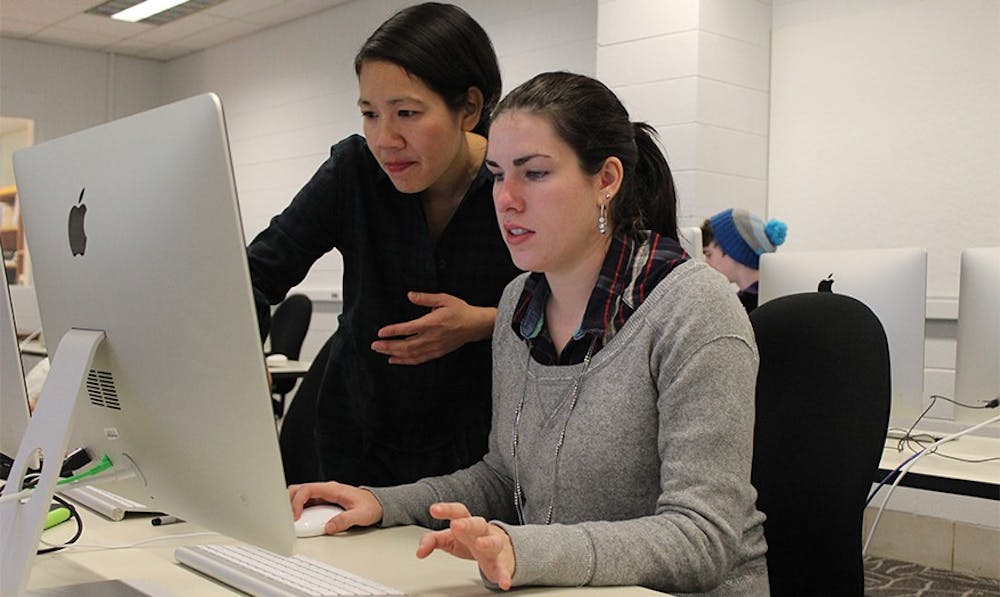Humans have always been natural storytellers. Now, the students of ARTS 106 are facing new challenges in the realm of storytelling.
ARTS 106, “Core Concepts: Time,” presents the concept of time within art. It teaches the newest art — the art of new media.
“The class is focused on the language of media. And, because media is so prevalent in visual culture, it’s really different than, let’s say, painting which is a little more verified,” said Hong-An Truong, the professor who has taught the course for three years now.
By the end of the semester, students complete several projects, each focusing on a different element of video production: editing, audio and light. The final project combines the three learned elements into one project.
Truong provides students with the basic idea of each project and certain elements their project must include.
For example, while studying light in film, the students had to create a “Light Journal” in which the students would be “careful and creative observers of light,” the rubric outlined.
Avi Goldstein, a freshman computer science major, found most of his inspiration for each project through trial and error. He began his experimentation by shooting artificial light in his room.
“As I started to take more shots from that first idea, I started to develop a theme through that,” Goldstein said.
Audrey Anderson, a sophomore communication studies major, saw this brainstorm process as intimidating.
“At first, I thought it was going to be really difficult because the projects were really open-ended, but in the end, I kind of like that it was, because we got to choose what we were interested in and make our own projects,” Anderson said.



